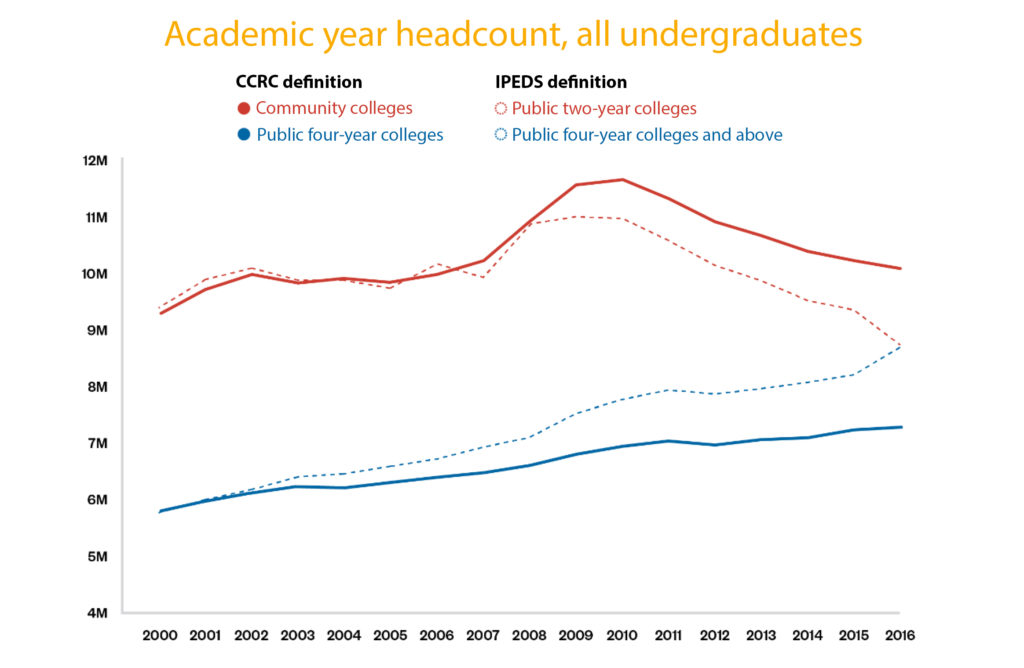The Community College Research Center (CCRC) released two new blog posts today. The first one examines community college enrollment trends during the Great Recession as a lens to view the impacts of COVID-19 on enrollments this fall and beyond. The second post describes work CCRC has been doing to more accurately reflect the role of community colleges when using federal data by including data on colleges that offer limited numbers of bachelor’s degrees with other community colleges.
The Great Recession and COVID-19
Colleges and universities are uncertain what enrollments next fall and beyond will look like given the major social and economic upheaval caused by the COVID-19 pandemic. CCRC examined enrollment trends in higher education before, during and after the Great Recession in an effort to gain insight into the effects of the current crisis on future community college enrollments.
Enrollments at community colleges spiked, along with the unemployment rate, for older adults during the Great Recession. However, several key differences are noted between the Great Recession and the current crisis that may lead to different enrollment trends this fall and beyond.
To address the challenges potential students will face, the center suggests that “Colleges will likely need to ensure that they offer programs tailored to help adult students facing intense income pressures and family responsibilities to secure stable employment in the near term and advance to better jobs when the economy begins to recover.”
The blog post also suggests that there may be a short-term shift of traditional-age students from four-year colleges to community colleges. However, analysis of prior enrollment trends suggests that community colleges may again lose enrollment shares to four-year colleges following short-term gains, and community colleges should develop strong transfer pathways to address the needs of these students.
Researchers also note the dramatic rise in dual enrollment in community colleges before and after the Great Recession. They posit that there will be increased interest by families to take advantage of dual enrollment — particularly where the cost to families for college credits is low. The blog post provides data visualization tools that allow users to drill into the historical enrollment data referenced in the blog.
More accurately describing community college data
Since the turn of the century, the number of community colleges offering limited numbers of bachelor’s degrees has grown. While these colleges still maintain their identities as community colleges, analysis of federal data frequently puts them with four-year colleges rather than with community colleges — skewing analysis of the sector. The second blog post discusses an approach to more accurately reflect community colleges in analysis by creating a list of colleges that classifies to reflect this phenomenon.

As the figure above demonstrates, reclassifying community colleges has a significant impact on where enrollment trends, changing from equal numbers in community colleges compared to public four-year colleges, to a difference of nearly 4 million more students attending community colleges in 2016.
The American Association of Community Colleges (AACC) has long been a proponent of using a broader definition of community colleges when analyzing federal data. Data produced by AACC has consistently included bachelor’s degree granting institutions, which predominantly offer an associate degree, in analysis of community college data.
CCRC provides a list of the colleges that it classifies as community colleges and invites an open conversation on its approach to defining community colleges.

